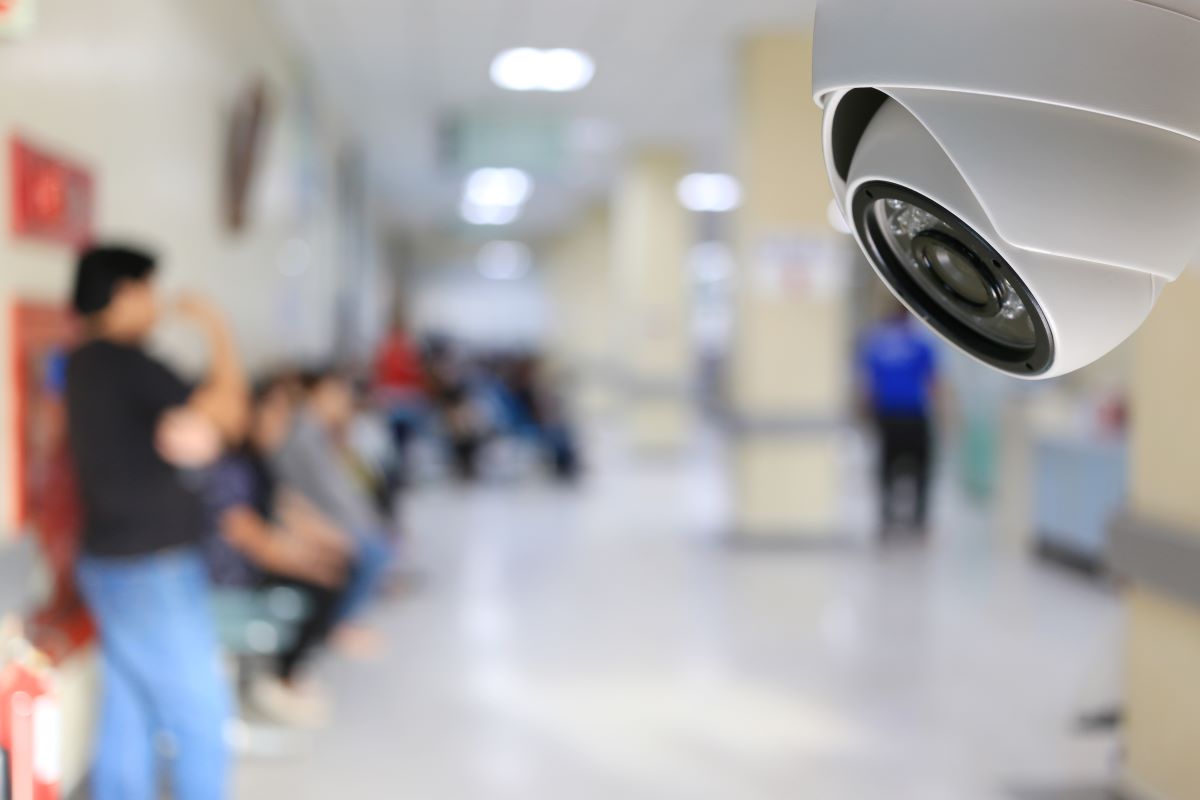Security at a Hospital: 5 Best Practices for Facilities

When patients receive care in a hospital, they expect the facility to be a calm, healing environment to rest and recover. Unfortunately, safety concerns that place patients and staff members at risk can arise. If you’re a healthcare leader looking to create a safe care environment, you may be wondering: What are some ways to improve security at a hospital?
While tackling healthcare security can seem like a daunting task, there are ways to mitigate risks and preserve peace for your staff and patients. In this article, we review the significance of workplace violence in healthcare, list threats that can pose a risk to facilities, and outline five hospital security best practices that can help you develop a culture of safety in your organization.
How Common Is Workplace Violence Against Healthcare Staff?
The statistics surrounding violence in the healthcare setting are startling. The AHA reports that workers in healthcare experience more workplace violence than workers in any other work environment. Their study found that 44% of nurses have experienced physical abuse and over 68% have experienced verbal abuse while attempting to provide patient care.
IntelyCare’s Nursing Trends Survey results showed that 28% of nurse respondents feel “unsafe” or “very unsafe” in their work environment. If clinicians are worried and anxious about their wellbeing while at work, they’re unable to focus on providing high-quality care.
Why Is Hospital Security Important?
Healthcare aggression and violence expose clinicians, patients, and their family members to dangerous situations. Therefore, prioritizing security at a hospital is essential to keeping operations running smoothly. Utilizing a security team can help your organization:
- Improve safety and reduce the risk violence in the patient care setting.
- Boost patient and staff satisfaction scores.
- Improve health outcomes by allowing clinical providers to focus on patient care efforts.
- Create a healthy work environment where staff members feel safe and protected.
- Build trust among healthcare executives, employees, and patients.
What Types of Threats Pose a Risk to Healthcare Facilities?
Thousands of individuals enter and exit hospitals every day. Facilities try to manage the influx of visitors, but it’s challenging to keep track of every individual that comes through the door. Most visitors have good intentions and are there to support their loved one and assist with the care delivery process. Some, however, are there to cause disturbances or incite violence.
In these instances, security teams work to control crisis situations and maintain safety for individuals in the area. Security personnel can be called to assist with dangerous situations like bomb threats, physical altercations, the brandishing of weapons, and instances of theft.
Without these teams, clinicians responsible for patient care are also required to manage facility safety. Care providers don’t receive formal training to handle these situations and aren’t able to provide appropriate patient care when handling these distressing moments. That makes it even more essential for hospital administrators to create strategic security plans to prevent unsafe working conditions and manage threats when they arise.
Healthcare Security: 5 Best Practices
Understanding the importance of security at a hospital is only the first step to improving safety and care quality at your facility. Here are five best practices that can help you implement initiatives that are effective and meaningful.
1. Involve Staff in Hospital Security Planning
The first step in planning healthcare security efforts is to gain insight into your facility’s current safety concerns. Poll clinicians, parking assistants, secretaries, and food service staff to identify security needs.
What safety issues are most critical to clinical staff? How can security officers be most helpful? Once you have the answers to these questions, you can begin developing your facility’s security policies and protocols.
2. Hire Vetted Hospital Security Officers
Overseeing security at a hospital can be challenging. You’ll want to ensure the hospital security guards you employ have the necessary skills and qualifications for the job. Be sure to perform a background check on all new security personnel and ask for letters of reference from previous employers to assess their reliability and professionalism.
3. Incorporate Security Codes Into Your Hospital’s Alarm System
Most hospitals utilize overhead alarm systems to communicate emergencies occurring within the facility. These facilities use color-coded alarms to denote the type of response personnel required. For example, a “code blue” would require a rapid response medical team, while a “code orange” call would deploy a janitorial employee to assist with a hazardous spill.
You can increase staff and patient safety by incorporating “code silver” and “code gray” calls into your organization’s alarm matrix. A “code silver” communicates to officers that a patient, family member, or visitor is brandishing a weapon while a “code gray” signifies that an individual is showing signs of aggression or violence.
These codes, when activated by either a push button or a phone call in patient care areas, would deploy security officers to the scene. When clinicians are confident that security officers are only a quick call away, they feel more protected and empowered to perform their care duties.
4. Provide Staff Training On the Role of Hospital Security Officers
It’s important to educate your clinicians on hospital security duties and responsibilities to give them a better sense of how these employees fit into care delivery processes. In your hospital security training, explain where security personnel will be posted and review the steps of initiating an emergency response call.
5. Conduct Safety Event Debriefs
In the unfortunate event that a safety event does arise, it’s important to hold a debrief session after the situation has been handled to discuss why the event took place, how it was handled, and what could be done to improve the response in the future. Hosting these supportive meetings can prevent burnout, improve employee retention, and boost satisfaction scores.
Discover More Ways to Improve Safety at Your Facility
Now that you’re aware of the need for security at a hospital, you’re probably looking for additional strategies to improve safety at your facility. Our free newsletter, written by a team of legal and clinical experts, is full of additional healthcare resources and guides that can help you enhance patient and employee wellness.
